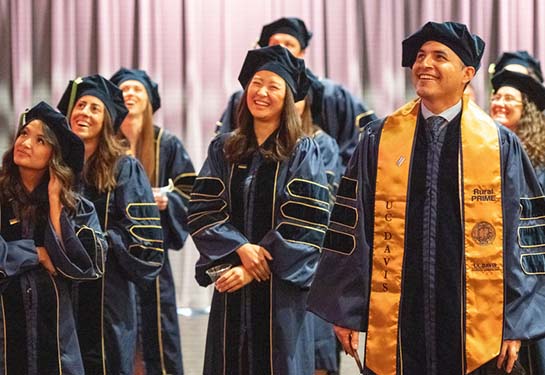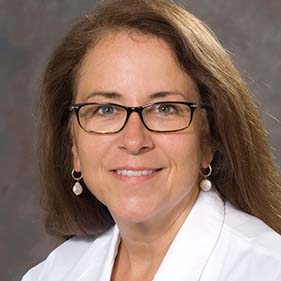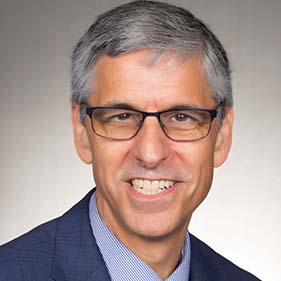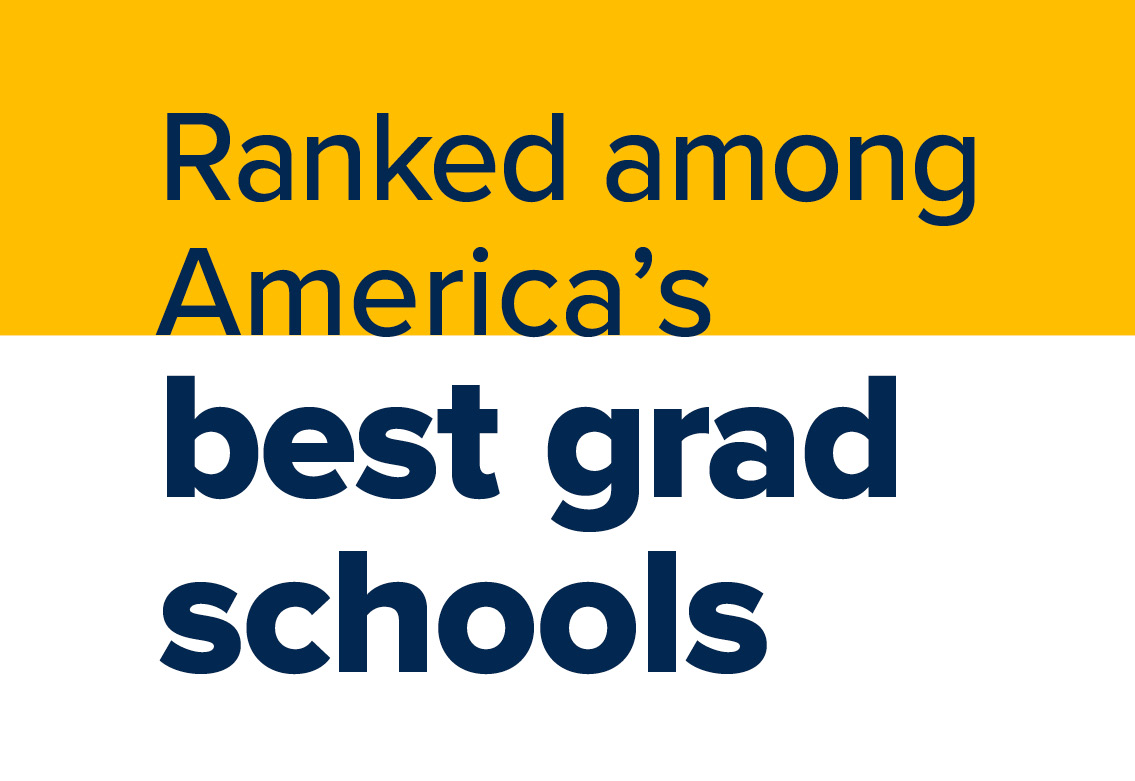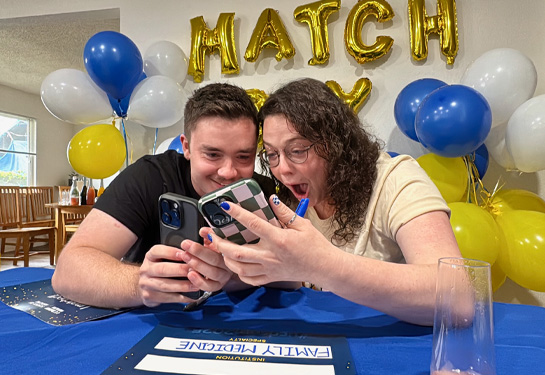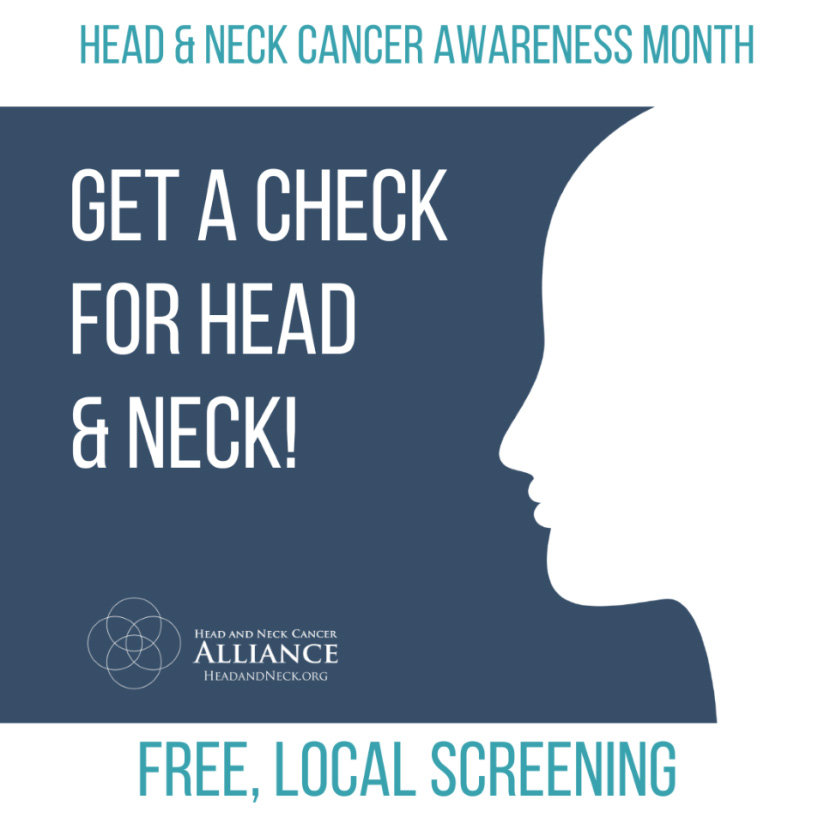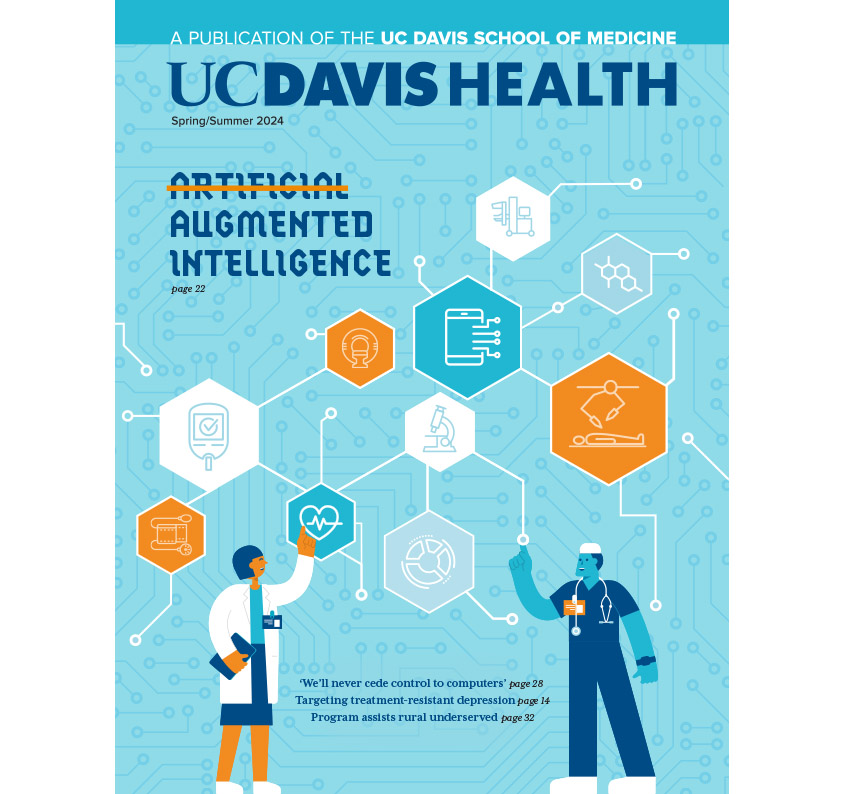Record 66% of School of Medicine graduates match in primary care residencies
UC Davis School of Medicine is leading the charge in cultivating and training new physicians to address the alarming shortage of primary care providers throughout California and bridge the state’s health equity gap.
This year a record 66% of graduates from UC Davis matched into primary care residencies — the highest among all University of California medical schools.
“We are delighted to have so many of our graduates match in primary care, in which we have a shortage particularly among rural communities and underserved populations,” said Susan Murin, interim dean of the School of Medicine. “A long-established goal at UC Davis School of Medicine is to train physicians for practice in diverse communities where they are most needed, and I am proud that our graduates have answered the call to serve.”
According to the California Future Health Workforce Commission, seven million Californians live in an area that has a primary care physician shortage, defined as less than one primary care physician per 2,000 people.
Among the groups hit hardest by the shortage are rural communities and minority populations. Disproportionate losses of primary care physicians in rural areas and overall population growth have led to a decrease in the density of primary care physicians to 37.5 per 100,000 people in California.
A long-established goal at UC Davis School of Medicine is to train physicians for practice in diverse communities where they are most needed, and I am proud that our graduates have answered the call to serve.” —Susan Murin
Holistic admissions process
Mark Henderson, associate dean of admissions, says many of the School of Medicine's graduating students will help address the shortage of primary care physicians in California, but there is more to be done.
“One of the solutions to addressing the primary care shortage is to develop a more diverse physician workforce – one that is more reflective of the various communities in California,” Henderson said. “When someone is deeply connected to a community, they are more likely to return to serve it. That is why we take a holistic approach to our admissions process, looking at more than just metrics, an applicant's grades and test scores.”
As part of the School of Medicine's holistic admission process, applicants must include supplementary activities and write essays describing their ambitions related to medicine. To further enhance the process, the admissions team hosts multiple mini-interviews. These allow them to delve more deeply into each applicant’s experiences and gain a deeper understanding of their attributes relevant to a medical career such as communication and teamwork.
“During our admissions process, we want to learn about who are our applicants, what is their background and what motivates them,” Henderson explained. “We try to look for candidates who have broad experiences and different perspectives that will help them relate sometimes to the struggles of their patients and be better prepared to serve them.”
When someone is deeply connected to a community, they are more likely to return to serve it. That is why we take a holistic approach to our admissions process, looking at more than just metrics, an applicant's grades and test scores.” —Mark Henderson
Community health scholars
Beyond holistic admissions, the School of Medicine has implemented numerous workforce development programs over the past decade to include more students from groups underrepresented in medicine who want to work in medically underserved communities.
Among these tracks are:
- The Accelerated Competency-based Education in Primary Care (ACE-PC), a three-year M.D. program designed with Kaiser Permanente to prepare students to practice primary care.
- TEACH-MS, Transforming Education and Community Health for Medical Students, geared for students who want to practice in urban underserved communities.
- REACH, or Reimagining Education to Advance central California Health, for students aspiring to work in the Central Valley.
- COMPADRE or California Oregon Medical Partnership to Address Disparities in Rural Education, a bold cross-state partnership to address workforce shortages in Oregon and Northern California in underserved tribal, rural and urban communities.
- Rural-PRIME, part of the University of California's "PRograms In Medical Education" or PRIME, which is designed to produce physician leaders who are trained in and committed to helping California's underserved communities.
- Tribal Health PRIME, a new PRIME track for students committed to serving Native American and indigenous communities.
"I take pride in the fact that UC Davis is training doctors to care for the people in medically underserved communities," said Alyssa Milliron, who received her medical degree from UC Davis in 2017. "Growing up in Oroville, I saw so many people have their health determined by their financial situation. That is why I chose to return to practice medicine here – everyone deserves quality healthcare no matter where they live or their financial situation.”
At UC Davis, Milliron was in the first class to participate in the ACE-PC program, which is an innovative three-year M.D. pathway for students committed to primary care careers. Rather than the traditional seven-year pathway to primary care practice, ACE-PC students complete their M.D. in three years, equipped with the knowledge and skills to directly progress into a partner PC residency. That allows them to enter primary care practice one year earlier than traditional students.
“The program mentored me to become a primary care doctor and eliminated many of the barriers, allowing me to follow my passion," said Milliron. "Across my class, we all entered with a desire to serve underrepresented communities and have each gone on to fulfill that mission."
Historically 75% of ACE-PC students are from communities underrepresented in medicine, and over 80% self-identify as disadvantaged on their American Medical College Application Service application.
“So many studies show patients receive better care when they are treated by somebody who understands their culture and can connect with them,” explained Milliron. “ACE-PC, like many of the programs at UC Davis, brings together such a diverse student body with different backgrounds, which creates a vibrant environment for medical students to train.”
Developing a diverse physician workforce
Recently, the School of Medicine ranked No. 3 in the nation in diversity of its student body according to the U.S. News & World Report's 2023 graduate school rankings. It marked the second consecutive year UC Davis was included in the top five for diversity in its student body.
Alejandro Rodriguez, who received his M.D. from UC Davis in 2022, chose the School of Medicine for his primary care training because of its commitment to diversity and the opportunity to treat patients in underrepresented communities.
"By bringing together a diverse group of students with rich histories and experiences, we bring a vision of things that we often feel are missing in medicine," he said. "Many of us have experienced the same health disparities we are trying to fix and so it pushes us into primary care because we want to change the conditions in the communities we came from."
Rodriguez, who grew up in Colusa, matched into family medicine at Sutter Sacramento. He plans to work in a rural community outside of Sacramento and bring better health to a region that is medically underserved.
“I want to be able to connect with my patients on multiple levels, knowing that their health is part of a web of complicated issues,” he said. “Having this type of relationship will allow me to treat the whole person and provide the type of care many of these communities are lacking.”
Continuing recruitment efforts
Despite the School of Medicine's focus on primary and rural care, Henderson believes there is more work to be done to address the shortage of primary care providers throughout California.
“We still don’t take enough students from [rural and underserved] communities who have a deep desire to want to go back to their community,” Henderson said. “We need to continue our efforts to recruit a diverse health care workforce to help us reach our health equity goals of improving the health of all Californians.”


